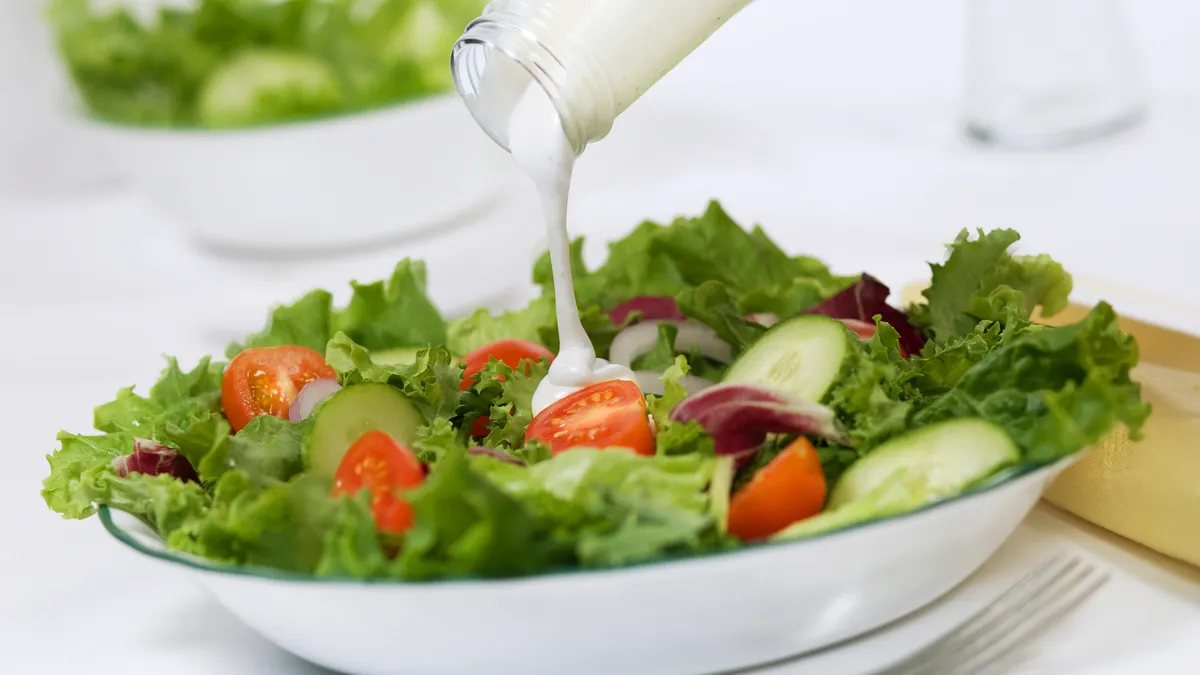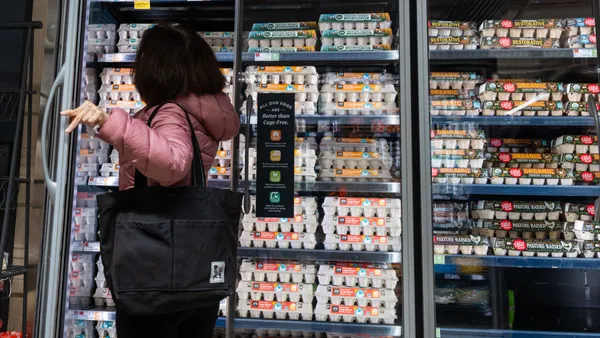Dive Brief:
- A chemical found in rocket fuel, certain plastics and airbags is also prevalent in several food and grocery items, according to Consumer Reports.
- Tests by the advocacy group discovered that the chemical, known as perchlorate, was detected in measurable levels of 67% of 196 samples across 63 grocery and 10 fast food products. The levels ranged from just over two parts per billion (ppb) to 79 ppb.
- Consumer Reports noted that none of the foods tested, which included fruits, vegetables, dairy and meat products, had “acutely dangerous levels of perchlorate.” Still, the group noted that some foods had enough of the chemical where several servings could add up to “potentially hazardous levels.”
Dive Insight:
Perchlorate has been closely monitored for decades after being found in food and water. In 2003, the Environmental Working Group, a consumer watchdog group, tested lettuce for perchlorate and detected it in nearly 20% of supermarket samples, often at high levels.
Consumer Reports noted that the EPA established an “official reference dose” two years later, basically a safe exposure level, for perchlorate of 0.7 micrograms per kilogram of body weight per day. The European Food Safety Authority established a threshold of half that amount.
According to the FDA, exposure to high dosages of perchlorate can interfere with the thyroid gland, disrupting the metabolism of adults and impacting the growth and development of the central nervous system in fetuses and infants.
Tunde Akinleye, a chemist who oversaw the testing for Consumer Reports, said in the report that the group decided to review foods following a “lack of action from regulatory agencies, which has led to a gap in our understanding of just how pervasive perchlorate currently is in our food.”
In a response to Food Dive, the EPA said it is reviewing the report.
Consumer Reports discovered that baby and kid-friendly food had the highest perchlorate level at 19.4 ppb, followed by fruits and vegetables at 9.3 ppb, baked products and grains at 6.9 ppb, dairy at 6.2 ppb and meat products at 5.3 ppb. None of the foods tested had perchlorate levels high enough to exceed the EFSA or EPA’s suggested daily limits, Consumer Reports said.
The advocacy group also studied packaging, with foods in plastic containers having the highest levels (averaging nearly 54 ppb), followed by foods in plastic wrap and paperboard.
James E. Rogers, director of product safety testing at Consumer Reports, said “regulators should do more to protect the public from contaminants like perchlorate, but at the same time, parents shouldn’t panic about what we found.”
It’s unlikely that the report will have any meaningful impact on the long-term consumption of foods tested by the advocacy group, or lead to changes at the companies that produce them, especially with perchlorate levels coming below what regulators would consider unsafe. The report could, however, place additional public attention on perchlorate and prompt the EPA and other regulators to conduct further review of the chemical.












